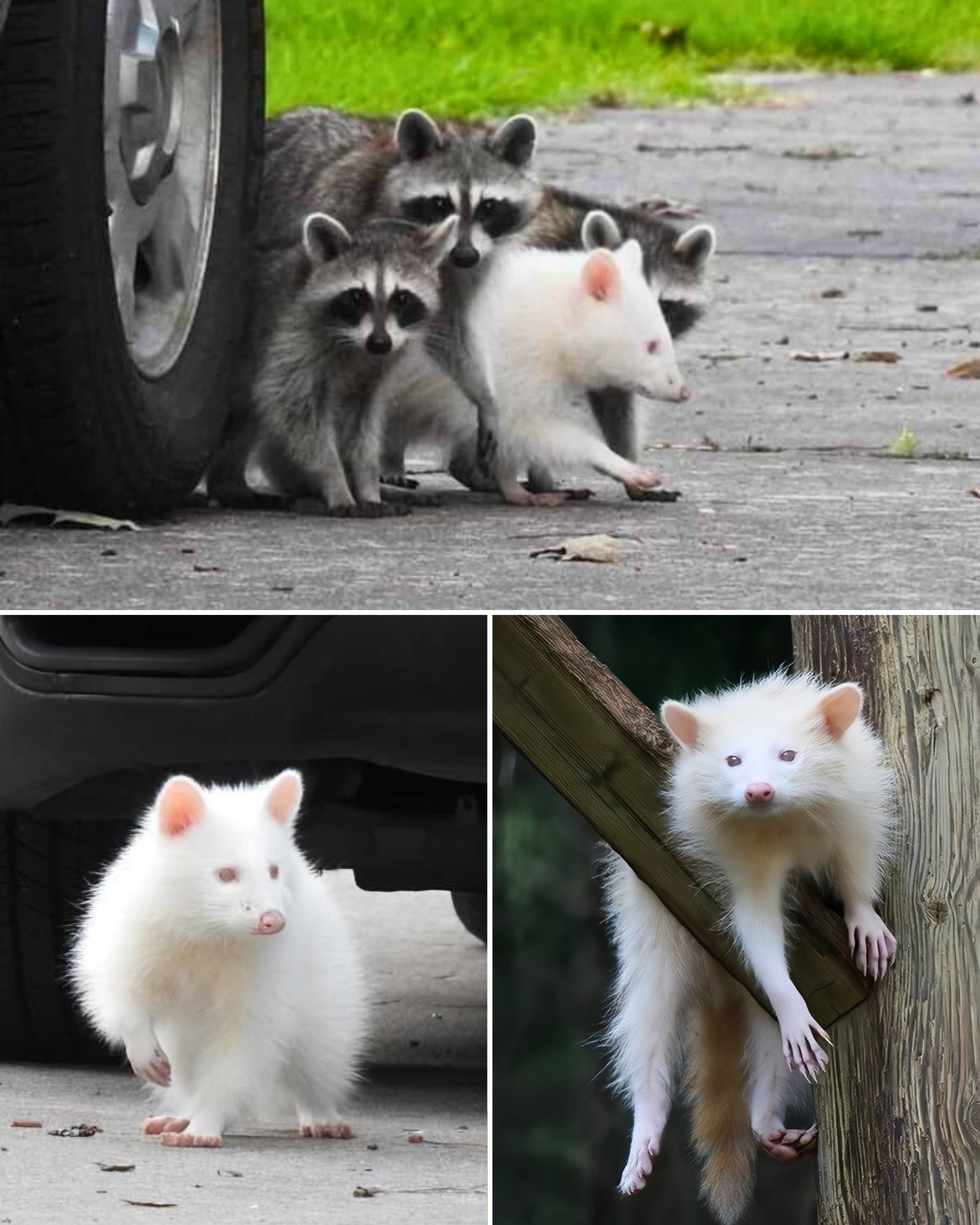Albino Raccoons: Nature’s Rare White Wonders

Albino Raccoons: Nature’s Rare White Wonders
When it comes to wildlife, some animals stand out not only because of their behavior or habitat but also due to their unique and rare physical characteristics. One such captivating example is the albino raccoon. For those who have never encountered one, an albino raccoon is truly a stunning creature — distinguished by its pure white fur and striking pink eyes. It almost looks like a magical being straight out of a fantasy tale. In this article, we will explore what makes albino raccoons so special and rare.
Albinism is a genetic condition characterized by the absence of melanin pigment in the skin, fur, feathers, or scales. Melanin is responsible for the coloration of these tissues. Without it, animals have white or very pale coloration and pink or red eyes due to visible blood vessels beneath the skin. In raccoons, albinism results from a genetic mutation that disrupts melanin production. This mutation is inherited recessively, making albino raccoons extremely rare.

Albino raccoons look very different from typical raccoons. Normally, raccoons have grayish to brown fur with distinctive black “mask” markings around their eyes and ringed tails. Albino raccoons, however, have pure white or very pale fur and pink or reddish eyes, along with pink noses and skin. Their unique appearance makes them especially eye-catching but also vulnerable in the wild. Their white fur offers little camouflage, increasing their risk of predation.
The rarity of albino raccoons is estimated at about 1 in 10,000 raccoons in the wild. This is due to both the genetic requirements and the lower survival rates albino animals face. Without camouflage, albino raccoons are easier prey for predators like coyotes, owls, and bobcats. They also suffer from increased sensitivity to sunlight, leading to skin and eye problems. Additionally, their distinct appearance sometimes makes them targets for poachers or illegal pet trade.

Despite these challenges, albino raccoons share the intelligence and adaptability of their pigmented cousins. They have curious natures and use their dexterous paws to explore and manipulate objects. Their omnivorous diet, including fruits, insects, and small animals, helps them survive in diverse environments. Albino raccoons are mainly nocturnal, which helps reduce daytime exposure to predators. However, their bright fur still puts them at risk during their nighttime activities.
Raccoons live across North America in forests, wetlands, and even urban areas. They typically make dens in hollow trees or abandoned structures and are skilled at adapting to human environments. Albino raccoons have been spotted across this range but remain extremely rare. Their reproductive cycle is similar to normal raccoons, with females giving birth to litters of 2 to 5 kits each year. Since albinism is inherited recessively, albino kits are rarely born.

Conservation of albino raccoons is important because their unique genetic traits do not provide survival advantages. They face threats from habitat destruction, traffic accidents, and human capture. While raccoons overall are not endangered, albino individuals are vulnerable. Educating the public about their rarity and challenges can help reduce illegal pet trade. Protecting natural habitats also supports healthy raccoon populations, including albino ones.
Albino animals have long fascinated humans and are often seen as magical or special. Albino raccoons appear in wildlife photography, folklore, and media due to their unusual looks. Their rarity makes sightings memorable and exciting for wildlife enthusiasts. Understanding their biology and ecology helps us appreciate the diversity of life. It also reminds us of the importance of protecting all creatures, no matter how rare.

In summary, albino raccoons are extraordinary animals with beautiful white fur and pink eyes. Their lack of pigmentation makes them vulnerable but does not diminish their intelligence and adaptability. They face many survival challenges in the wild, yet they continue to thrive in varied environments. Preserving their habitats and preventing illegal trade are key to their survival. These rare white wonders remind us of nature’s incredible diversity and the need to respect all living beings.






